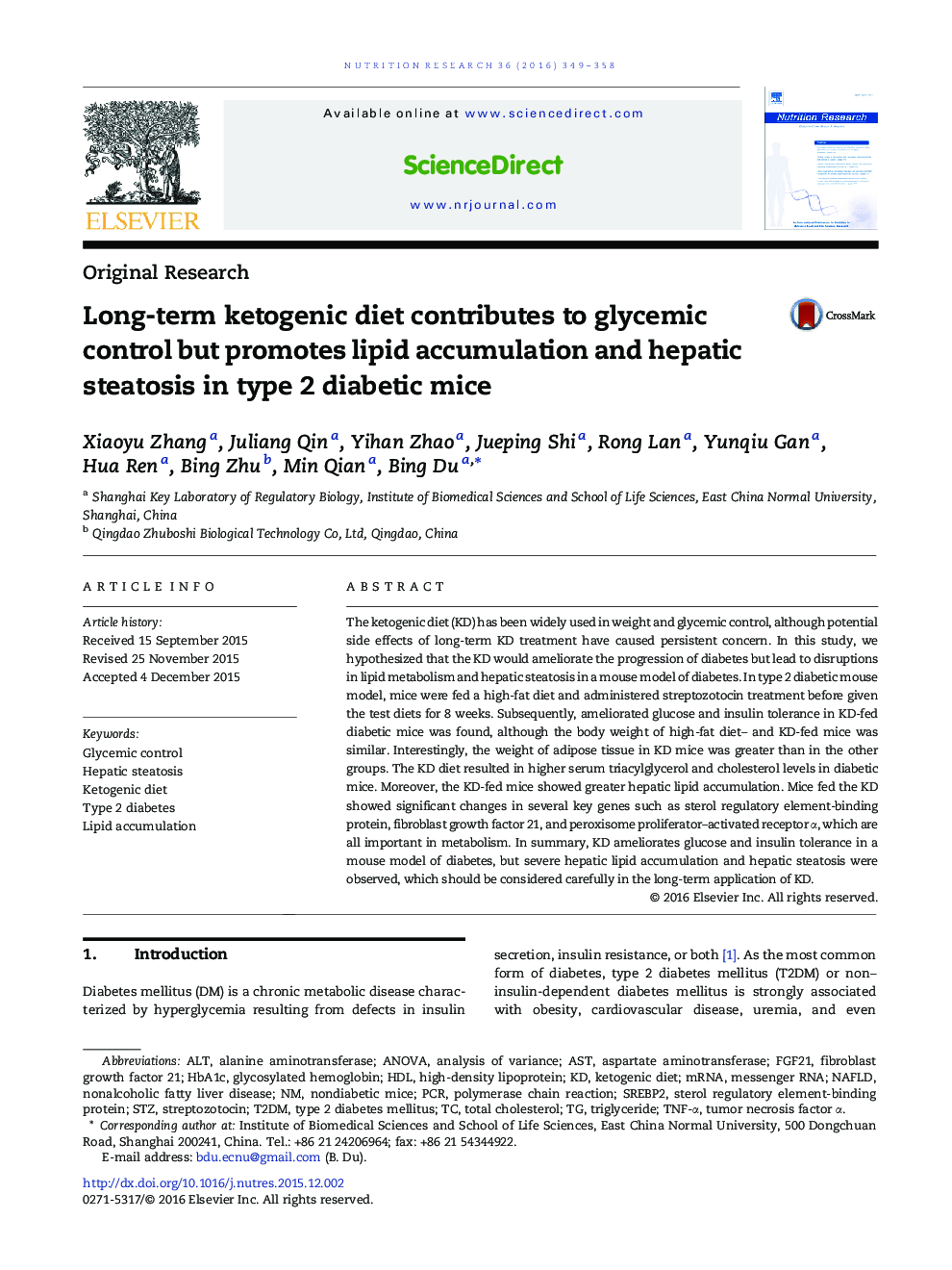| کد مقاله | کد نشریه | سال انتشار | مقاله انگلیسی | نسخه تمام متن |
|---|---|---|---|---|
| 2808929 | 1157984 | 2016 | 10 صفحه PDF | دانلود رایگان |
The ketogenic diet (KD) has been widely used in weight and glycemic control, although potential side effects of long-term KD treatment have caused persistent concern. In this study, we hypothesized that the KD would ameliorate the progression of diabetes but lead to disruptions in lipid metabolism and hepatic steatosis in a mouse model of diabetes. In type 2 diabetic mouse model, mice were fed a high-fat diet and administered streptozotocin treatment before given the test diets for 8 weeks. Subsequently, ameliorated glucose and insulin tolerance in KD-fed diabetic mice was found, although the body weight of high-fat diet– and KD-fed mice was similar. Interestingly, the weight of adipose tissue in KD mice was greater than in the other groups. The KD diet resulted in higher serum triacylglycerol and cholesterol levels in diabetic mice. Moreover, the KD-fed mice showed greater hepatic lipid accumulation. Mice fed the KD showed significant changes in several key genes such as sterol regulatory element-binding protein, fibroblast growth factor 21, and peroxisome proliferator–activated receptor α, which are all important in metabolism. In summary, KD ameliorates glucose and insulin tolerance in a mouse model of diabetes, but severe hepatic lipid accumulation and hepatic steatosis were observed, which should be considered carefully in the long-term application of KD.
Journal: Nutrition Research - Volume 36, Issue 4, April 2016, Pages 349–358
